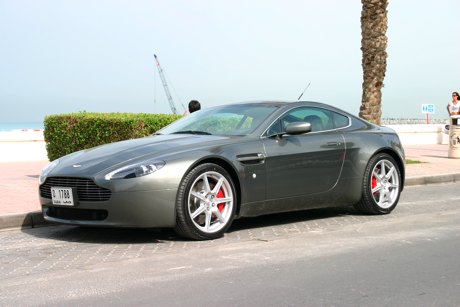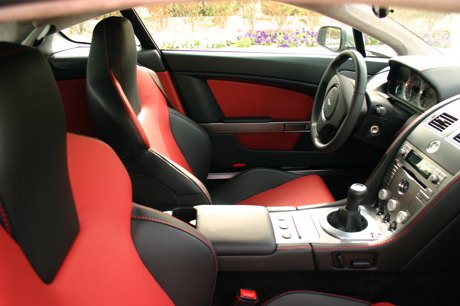After a twelve year hiatus triggered by technical issues (my hosting provider went bust) and laziness (my site backups were not up-to-date), I’m back. For the past decade or so I’ve been using a combination of Twitter & Facebook as my “blogging” platforms, but they each have their limitations…so it was time to rescue my old blog with the help of the Internet Archive and recover all my old posts. Now that’s done, I’m looking forward to posting here and sharing insights with my millions of loyal followers.
Pulse: hello world!
For the past few months this blog has been very quiet; that’s mostly because I’ve been busy trying to get a new project off the ground. This is something I’ve been working on since I left Microsoft back in 2003, but it has taken time and some mistakes along the way to build the company and product that I wanted.

I’m pleased to announce the launch of the Pulse family of residential and hospitality automation products and the company behind it, Aspalis SAS.
Aspalis was formed in December last year as a partnership between myself and my friend Laurent Nicq. Laurent and I met in 2004 while he was working for a company called ConvergeX which was building Windows Media Center based home automation software. When that company had severe financial trouble and laid off most of its staff, Laurent and I decided to partner and build our own company and hire many of the talented engineers which ConvergeX let go.
Thus, Aspalis SAS was born and is now based in scenic Sophia-Antipolis, just outside of Nice and Cannes in the south of France. Besides myself and Laurent, we have five other talented people working with us: Jean-Paul, Emmanuel, Baptiste, Lucas, and Thomas. Aspalis is working closely with Navicom Technologies FZCO, a Dubai-based company in which I’m also involved, to bring products based on Aspalis software to market in the Middle East and the rest of the world.
 The first of these products is the Pulse Controller. This device acts as a central monitoring, control, automation, and remote management gateway for various systems in the home. At present, this device is designed to interact with hardware using the KNX / EIB and Z-Wave protocols; we will be adding support for additional protocols and standards in the future. Basically, the Pulse Controller interfaces with lighting, HVAC, curtain/shutter, IP cameras, and other devices/systems in the home to present the user a unified view on what’s going on around them.
The first of these products is the Pulse Controller. This device acts as a central monitoring, control, automation, and remote management gateway for various systems in the home. At present, this device is designed to interact with hardware using the KNX / EIB and Z-Wave protocols; we will be adding support for additional protocols and standards in the future. Basically, the Pulse Controller interfaces with lighting, HVAC, curtain/shutter, IP cameras, and other devices/systems in the home to present the user a unified view on what’s going on around them.
The end user interacts with the Pulse Controller via client software running on a range of devices:
- In-wall touch screens running Windows Embedded CE 5.0 or 6.0 with the .NET Compact Framework installed
- Personal computers running Windows XP and Vista, including a special version for UMPCs
- Mobile devices such as Windows Mobile 5.0 PocketPC and Smartphone connected via a WWAN connection such as GPRS/EDGE/UMTS/HDSDPA/etc
- In the near future we will add support for clients based on Vista Media Center, Mac OS X, Symbian, and the .NET Micro Framework.
 We have worked hard to build a simple and consistent user interface which adapts to the unique characteristics of the device it is running on. It’s hard for me to describe what I’m talking about, but we hope to post a Flash based demo that you can play with on our website sometime early next year.
We have worked hard to build a simple and consistent user interface which adapts to the unique characteristics of the device it is running on. It’s hard for me to describe what I’m talking about, but we hope to post a Flash based demo that you can play with on our website sometime early next year.
The Pulse Controller itself is also a mini-computer, but is totally customized to suit the unique requirements of the market we are targeting. First and foremost, the hardware and software inside the Pulse Controller is designed to be reliable and easily serviceable. The hardware is based on industrial-grade embedded technology and features an Intel IXP420 Network Processor running at 400 MHz. At present, it runs Windows Embedded CE 5.0 Core, but we are evaluating CE 6 for future versions. The blocking issue at the moment is the lack of a suitable BSP.
The Pulse Controller is manufactured for us by Kontron Modular Computers GmbH on top of their E2Brain platform and the entire system is fully CE certified. We are in the process of getting FCC certification as well. The Pulse Controller has 64MB of SDRAM and 32MB of flash storage. It has two serial ports, two USB 2.0 ports, and two 10/100 Ethernet ports. There is space inside for an RF module, which presently occupied by a Z-Wave module available in 868.42 or 900 MHz versions. KNX / EIB support is enabled by way of a Siemens BIM 113 module which allows direct connection to a wired EIB bus. The device accepts 10 to 33 volts DC, and consumes around 4 watts during normal operation. It’s very compact and comes with both wall and DIN rail mounting brackets.
In addition to making it reliable and delivering easy-to-use client software, one of our most important goals was to design a solution which scaled well. By this I mean that we want to offer home automation for even the largest residential/hospitality projects out there. In order to do this, you have to design a solution which can be monitored, controlled, and updated remotely. We have built some configuration and deployment tools already, but have also included full support for monitoring and control of the Pulse Controller via SNMP. A white paper detailing this capability will be posted shortly.
In summary, the Pulse Controller and associated products have some unique selling points:
- Reliability. The hardware and software was designed from the ground-up to be reliable and easy to service.
- Scaleability. We have developed the first home automation solution which can be deployed in large residential or hospitality projects in the same way networking or communications equipment is used.
- Cost. We have not taken the traditional “kitchen sink” approach, but rather focused on delivering a solution which has some basic/essential features and does those things well. We’ll leave the flashy/gimmicky features to all the other guys.
- Openness. We like making friends. By leveraging protocols such as EIB and Z-Wave, we allow our dealers and installers to design solutions which best suit their customer’s requirements. We also play nice when it comes to client devices and are open to integrating the Pulse Controller with front-end software from others.
So, what’s next? We just finished exhibiting at the Gulf Information & Technology Exhibition (GITEX) in Dubai, thanks to the kind folks at Intel who gave us some space at the last minute. Next week we’ll be at Cityscape 2006 in Dubai starting on December 4th. We will be on the Al Shafar General Contracting stand. In early January, we’ll be making our North American debut at CES in Las Vegas. More details on that shortly.
If you are interested in learning more, watch our website or this blog and we’ll have more information about where you can buy home automation systems incorporating our products and technologies. Our initial focus is on new homes, but the Pulse Controller can also be used in existing homes.
I’m really proud of the work my team has done over the past year, and I am confident that we have carved ourselves a viable niche in the home automation market. The architecture we have developed makes it easy to adapt to changing market requirements and we have already begun work on future generations of the existing product and new products as well.
Gay Paree
Virgin Atlantic comes to Dubai
A couple of friends and I gate crashed a Virgin Atlantic party last night at Bab Al Shams celebrating their inaugural flight to Dubai. Richard Branson was there and we enjoyed a nice buffet dinner and traditional Middle Eastern entertainment including four belly dancers.
I’m glad they have started on this route as both British Airways and Emirates need the competition to bring fares down and increase the level of service on this sector. Many people will also prefer flying Virgin all the way from California and Las Vegas to Dubai rather than using BA which is the only option at the moment. The Virgin Upper Class is far superior to the Business Class on both Emirates and BA.
UPDATE: I just saw a half-page ad in the newspaper from Etihad Airways saying “With 25 Etihad flights a week, the UK is hardly virgin territory.” This is basically a response to the launch of Virgin Atlantic’s service to Dubai. For those who don’t know, Etihad is the third “national carrier” of the United Arab Emirates. The other two are Emirates and Air Arabia, but none of these airlines belong to the U.A.E. federal government. Etihad belongs to Abu Dhabi, Emirates to Dubai, and Air Arabia to Sharjah.
Anyway, my point is that after seeing this ad I decided to figure out how many flights per week there are between the UAE and the UK. It turns out there are a lot. Emirates has 92 flights per week between Dubai and the UK, Etihad has 25 per week between Abu Dhabi and various UK destinations, and then there are services from British Airways, Virgin, Bangladesh Biman, and Royal Brunei which bring the grand total to approximately 122 flights per week yet it’s always difficult to get a seat and decent fare. I also found that Dubai is the second busiest destination out of London Heathrow after New York.
I’m certainly not James Bond…
I’m certainly not James Bond, but I have now bought my second “Bond” car. My first was a 1999 BMW M Roadster (The BMW Z3 was featured in Golden Eye), and my second is my new Aston:






This is my new 2006 Aston Martin V8 Vantage, in Mercury Silver with two-tone Obsidian Black and Chancellor Red leather interior. Here are some pics of it alongside my 2004 Mercedes-Benz G55 AMG which is now for sale:

iKC
My friend “KC” is Her first post talks about her new iMac Core Duo, aka Donnatella.
End of an era: Mac Internet Explorer
 The last few months have been a time of major change for me, with many things coming to an end and a few new beginnings…not enough maybe. It’s time to add one more to the list, and this blurb on the Microsoft website says it all:
The last few months have been a time of major change for me, with many things coming to an end and a few new beginnings…not enough maybe. It’s time to add one more to the list, and this blurb on the Microsoft website says it all:
IMPORTANT INFORMATION FOR MICROSOFT INTERNET EXPLORER FOR MAC USERS
In June 2003, the Microsoft Macintosh Business Unit announced that Internet Explorer for Mac would undergo no further development, and support would cease in 2005. In accordance with published support lifecycle policies, Microsoft will end support for Internet Explorer for Mac on December 31st, 2005, and will provide no further security or performance updates.
Additionally, as of January 31st, 2006, Internet Explorer for the Mac will no longer be available for download from Mactopia. It is recommended that Macintosh users migrate to more recent web browsing technologies such as Apple’s Safari.
There was a News.com (CNET) article on this topic back in 2003 when I left Microsoft.
Four years of my life were dedicated to this product and others based on it. Those four years in the Macintosh Business Unit at Microsoft were incredible, and I learned many important lessons and made some great lifelong friends. The most remarkable thing about those four years was that I was able to fulfill a childhood dream…and get paid lots of money for it! My first real computer was an Apple II+ and I have been hooked on Apple’s products since I was six years old. To work in the largest Mac software development team in the world, live 15 minutes away from Cupertino, and become friends with many of the people who were instrumental in making the Macintosh successful was a dream come true.
Along the way, I gained an appreciation for Microsoft which not enough people have. It’s a truly remarkable company that treats its employees well, develops some incredible technology, and deserves all the success it has. As with any large collection of people, Microsoft has made mistakes along the way, but that does not diminish the impact it has had on billions of people’s lives and the way it has helped technology progress. I’m sure people will post some comments telling me how evil Microsoft is and that’s fine. They are wrong, but still entitled to their opinion. I am a hardcore Mac user and reformed Microsoft-hater so no one is going to be able to change my opinion since its based on first hand experience.
This announcement has sparked some debate on Slashdot, which was inevitable. Omar pointed me to a comment to this by our former co-worker Jorg Brown, who now works for Google, which I’ll quote below:
MacIE had one of the strangest and saddest histories I’ve seen, of any product.
MacIE 5 was an awesome release, critically aclaimed and everything, with a good development team and a strong testing team, that included daily performance measurement.
And yet, almost immediately after 5.0 was released, the MacIE team was redeployed to work on a set-top DVR box. The notion at the time was that the team would continue to do MacIE work in their spare time, since IE 5 was the leader among Mac browsers and no longer needed a full-time team.
The problem with that notion was that WebTV, the team’s new bosses, had no reason to actually schedule any time for real IE work. So later, when that particular set-top box got cancelled, the IE team got redployed for other WebTV work, and since this was now out of MacBU’s control, nothing could really be done.
3 or 4 years went by before enough people in the Mac division wanted to resume work on IE, and when it looked like we might actually need the technology, as a base for MSN-for-Mac, the IE 6 team was formed. It got a firm OS X-only foundation, a new even more complient browser base, and then suddenly it became apparent that Apple was doing their own browser, because, well, there were lots of small clues, but the big clues was that Apple had started calling the old Mac IE team offering them jobs.
By that time the Mac division had formally committed to MSN-for-Mac-OSX, so it’s not like we were completely going to stop work. But a meeting was held internally, the outcome of which was that it didn’t make sense to build our own browser if Apple was going to bundle one, because the marketshare and mindshare of the distant-second-place browser, on the distant-second-place platform, wasn’t worth pursuing. A week later we had a meeting with high-up people at Apple, where they told us they were doing a browser. And the week after that, after confirming it with Bill Gates, who was reportedly sad but understanding of the decision, MacIE was officially shut down.
MSN-for-MacOSX went ahead, and was also critically acclaimed, but once released, indications were that the number of users was about the same as the number of developers. After that, MacBU concentrated once again on the next Office release, and MacIE has been well and truly and permanently dead ever since.
Over the whole sad journey, the single most surprising thing I ever discovered was from a small conversation that went:
Me: “Look, if it makes sense to devote dozens of people to WinIE, then surely it makes sense to devote half a dozen to MacIE!”
Higher-up: <confused look> “There aren’t dozens of people on WinIE. WinIE had some great people on it! We need those great people on products that make money!”
Me: “Then why on earth did we pursue IE in the first place? Just so that the DOJ would sue us?”
Higher-up: <confused look>
Some day I hope to get a proper answer on our motivation to do WinIE and MacIE in the first place. It seems to be that we were scared of not having control of the HTML standard. And indeed, now that Firefox is gaining traction, Microsoft has added more people to WinIE again.
Epilogue: All of this made it a lot more easy for me to quit and go work at Google
Reminder: I may or may not be leaving some parts out for NDA reasons.
A lot of what he says is true; but the story is more complex than this and there were many other factors that came into play. Issues which he doesn’t cover…primarily because he wasn’t working on the product much until the last few months of development:
- – Mac IE was the first real browser running on Mac OS X. We had it running on Developer Preview 2 and it shipped on the Public Beta CD-ROM. That was a great engineering achievement but it came at a very high price. Developing for OS X in those early days was a nightmare and we spent so much time struggling with OS bugs and changing APIs that precious time that could have been used to improve the product was wasted just trying to maintain compatibility with each new beta release of OS X.
- – Apple was a pain in the ass sometimes. For a company with such great PR, they really were very unprofessional and treated developers poorly. I know that the OS X transition was tough, but there are so many stories I could tell of stupidity at Apple and policies which made no sense…but I won’t. I’ll just say that Apple had a lot more involvement in the development of Mac IE and it’s eventual end than Jorg gives them credit for. There were times during the last two years of working at Microsoft that I really hated Apple’s management…which was very difficult for me being such a loyal fan of their products and having so many friends who worked there.
- – No clear direction from our management was the last major factor which Jorg touched upon but is important to mention again. Towards the end, we had some major changes in management at the MacBU and the new team was inexperienced both with the products they were managing and how to deal with Apple. They were further handicapped by lack of clear direction by our execs who were too busy worrying about AOL, the DOJ, and our stock price.
Anyway, enough about the history. Mac IE is dead, and it’s up to Apple and the Mozilla team to continue to innovate for us Mac users. Sadly, there are still many very useful features in Mac IE that neither company has replicated in their browsers and there are still too many sites which don’t look right in Safari. I remember calling up CNN and ESPN and getting them to fix problems in their websites…it worked and I hope Apple has a group of people doing the same thing.
Since Microsoft will no longer be offering Mac IE 5 for download on their website, I’m going to provide a community service by linking to it here. It has not been totally replaced and at least I need a place to be able to download it from for my own personal use…but you’ll have to know what to click on to download it. ![]()
If you ever want to know who the people behind Mac IE 5 were, just type “about:tasman” in the address bar of Mac IE and you’ll get a list of the people who put their heart and soul into making it such a remarkable and successful product.
EDIT: Link removed at Microsoft’s request.

